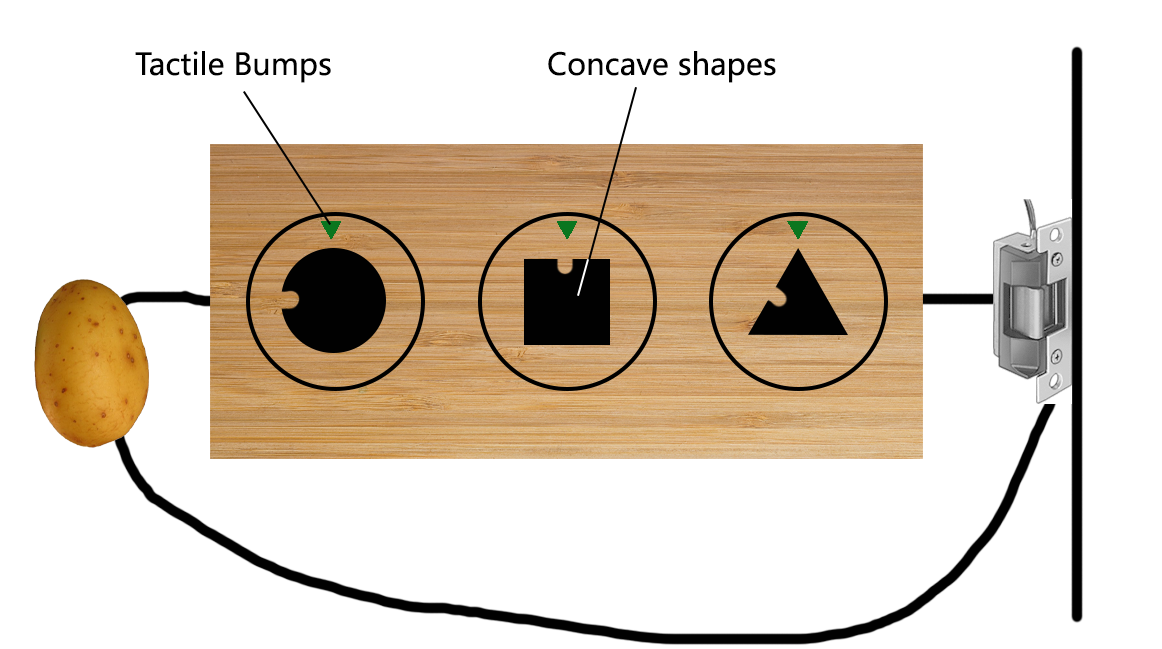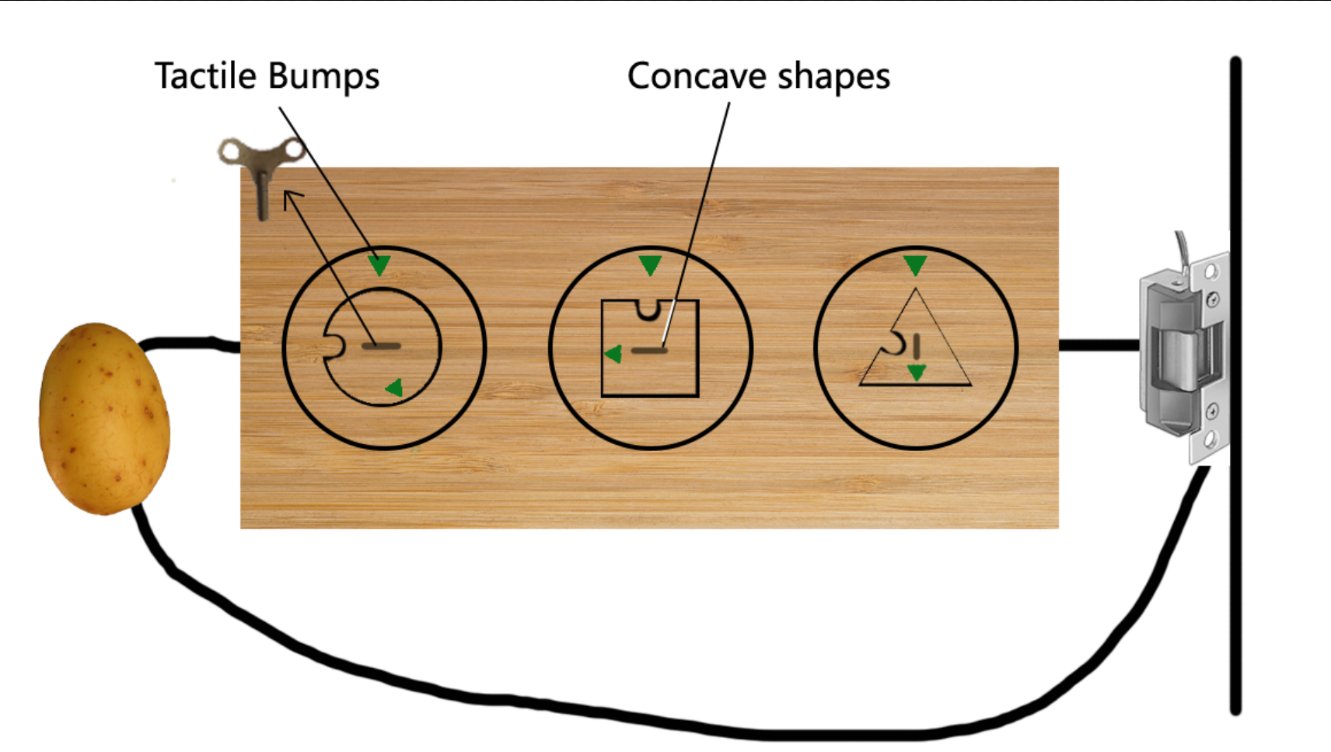This week, we focused on the design of the room and its puzzles. We visited the Center for Creative Reuse of Pittsburgh to start to build an idea of what furniture and props our room will be full of. It turned out to be even better than we had expected – so many things to reuse!
We also met with a group of first year ETC students who were interested in our project. They gave us a lot of feedback and helped us get excited about our project again!
From design:
This week we planned a playtest that aimed to test if people find the 3 objects (clues) in the final experience, then figure out the lock of the room. So we used a very simplified version of this puzzle – just a set of 3 shapes that needed to be matched to unlock the puzzle. We mainly wanted the testers to learn the room through tactile map, but because the map we had didn’t have the reference point and it was not fixed to the surface, it wasn’t used to help testers learn the room and the clue locations. Also, because the testers were young (8-12 years), they had short attention spans overall, which was pretty problematic. However, it was exciting to watch the groups who did complete the puzzle and some of them had some great moments during the experience.
We will have to find ways to design so that guests will not learn about the puzzle that they need to solve too slowly. This week, all the puzzles that will be in the final experience have to be detailed out.
From tech:
This week we mainly discussed how we will implement the door lock mechanism and what devices/equipment we will need to make it work. We did some research ourselves and we also talked with a faculty member Dave Purta, who gave lots of useful information to us. So now we have a pretty detailed plan on how to actually make it work.
Things we need:
- 3 5-position rotary switches
As stated in the title, these switches will have 5 positions that you can rotate it to. If we put it in a circuit and only connect one of its positions, then the circuit will only be completed if you rotate the switch to that specific position.
- An electronic door strike plate
These plates will enable us to “regulate access to doors by holding or releasing a lock’s latch with a signal from a push-button switch, keypad control, or card reader”. So we can control the opening of the secret door with these.
As for the design of the entire lock, we want the guest to do the following things:
1. Find 3 pieces that have different shapes by solving 3 puzzles in the room. The pieces will probably look like this:
 The pieces are wooden shapes, with rotary handle on them that you can grab, and tactile bumps. (the green things in the picture)
The pieces are wooden shapes, with rotary handle on them that you can grab, and tactile bumps. (the green things in the picture)
2. Find a lock on the secret door that looks like this:
The wires and the power would all be on the back of the door hidden. The guest will only be able to feel that there are 3 concave shapes on the door that needs something to be filled in. There are tactile bumps on the top of each shape.
3. The guest will put the pieces in the door
4. The guest then rotate the plates with the handles to line up the tactile bumps.
Once all 3 plates are in correct place, the rotary switches embedded will all be connected, hence connecting the whole circuit and opens the door.
Next week we are looking forward to prototyping the rest of our puzzles and beginning to construct our walls.




